
Li Bai, also pronounced as Li Bo, courtesy name Taibai, was a Chinese poet, acclaimed from his own time to the present as one of the greatest and most important poets of the Tang dynasty and in Chinese history as a whole. He and his friend Du Fu (712–770) were two of the most prominent figures in the flourishing of Chinese poetry under the Tang dynasty, which is often called the "Golden Age of Chinese Poetry". The expression "Three Wonders" denotes Li Bai's poetry, Pei Min's swordplay, and Zhang Xu's calligraphy.

Hua Mulan is a legendary folk heroine from the Northern and Southern dynasties era of Chinese history.

Chinese poetry is poetry written, spoken, or chanted in the Chinese language, and a part of the Chinese literature. While this last term comprises Classical Chinese, Standard Chinese, Mandarin Chinese, Yue Chinese, and other historical and vernacular forms of the language, its poetry generally falls into one of two primary types, Classical Chinese poetry and Modern Chinese poetry.
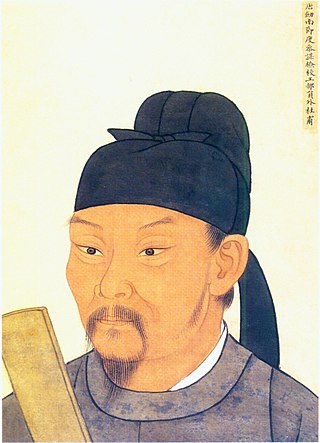
Du Fu was a Chinese poet and politician during the Tang dynasty. Along with his elder contemporary and friend Li Bai, he is frequently called the greatest of the Chinese poets. His greatest ambition was to serve his country as a successful civil servant, but he proved unable to make the necessary accommodations. His life, like the whole country, was devastated by the An Lushan Rebellion of 755, and his last 15 years were a time of almost constant unrest.
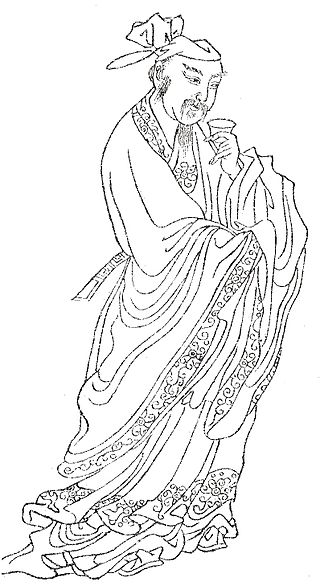
Du Mu (Chinese: 杜牧; pinyin: Dù Mù; Wade–Giles: Tu4 Mu4; 803–852) was a Chinese calligrapher, poet, and politician who lived during the late Tang dynasty. His courtesy name was Muzhi (牧之), and art name Fanchuan (樊川). He is best known for his lyrical and romantic quatrains.

Li Qingzhao, also known as Yian Jushi was a Chinese poet and essayist during the Song dynasty. She is considered one of the greatest poets in Chinese history.
Fu Hao died c. 1200 BC, posthumous temple name Mu Xin (母辛), was one of the many wives of King Wu Ding of the Shang dynasty and also served as a military general and high priestess. Minimal evidence detailing Fu Hao's life and military achievements survived the Shang Dynasty, and the records may have perished over the course of time.
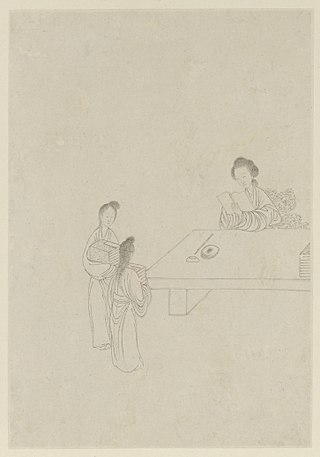
Ban Zhao, courtesy name Huiban, was a Chinese historian, philosopher, and politician. She was the first known female Chinese historian and, along with Pamphile of Epidaurus, one of the first known female historians. She completed her brother Ban Gu's work on the history of the Western Han, the Book of Han. She also wrote Lessons for Women, an influential work on women's conduct. She also had great interest in astronomy and mathematics and wrote poems, commemorative writings, argumentations, commentaries, essays and several longer works, not all of which survive. She became China's most famous female scholar and an instructor of Taoist sexual practices for the imperial family. Ban Zhao is depicted in the Wu Shuang Pu by Jin Guliang.

Mi Fu was a Chinese painter, poet and calligrapher who was born in Taiyuan during the Song dynasty. He became known for his style of painting misty landscapes. This style would be deemed the "Mi Fu" style and involved the use of large wet dots of ink applied with a flat brush. His poetry was influenced by Li Bai and his calligraphy by Wang Xizhi.
Fu Xuan (217–278), courtesy name Xiuyi, was a Chinese historian, poet, and politician who lived in the state of Cao Wei during the Three Kingdoms period and later under the Jin dynasty. He was one of the most prolific authors of fu poetry of his time. He was a grandson of Fu Xie (傅燮), a son of Fu Gan (傅幹), and the father of Fu Xian (傅咸).

Fu, often translated "rhapsody" or "poetic exposition", is a form of Chinese rhymed prose that was the dominant literary form in China during the Han dynasty. Fu are intermediary pieces between poetry and prose in which a place, object, feeling, or other subject is described and rhapsodized in exhaustive detail and from as many angles as possible. Fu's distinguishing characteristics include alternating rhyme and prose, varying line length, close alliteration, onomatopoeia, loose parallelism, and extensive cataloging of their topics. Classical fu composers often tried to use as wide a vocabulary as possible, and their compositions are usually replete with rare and archaic Chinese words. Fu were not sung like songs, but were recited or chanted.

Yu Xuanji, courtesy names Youwei and Huilan, was a Chinese courtesan and poet of the late Tang dynasty, from Chang'an. She was one of the most famous women poets of Tang, along with Xue Tao, her fellow courtesan.

Xue Tao, courtesy name Hongdu (洪度/宏度) was a Chinese Yiji and poet of the Tang dynasty. She was one of the most famous women poets of Tang poetry, along with Yu Xuanji and Li Ye.
The ranks of imperial consorts have varied over the course of Chinese history but remained important throughout owing to its importance in the management of the inner court and in imperial succession, which ranked heirs according to the prominence of their mothers in addition to their strict birth order. Regardless of the age, however, it is common in English translation to simplify this hierarchy into the three ranks of empress, consorts, and concubines. It is also common to use the term "harem", an Arabic loan word used in recent times to refer to imperial women's forbidden quarters in many countries. In later Chinese dynasties, these quarters were known as the inner palace or the back palace. In Chinese, the system is called the Rear Palace System.

Tang poetry refers to poetry written in or around the time of or in the characteristic style of China's Tang dynasty, and/or follows a certain style, often considered as the Golden Age of Chinese poetry. The Complete Tang Poems includes over 48,900 poems written by over 2,200 authors. During the Tang dynasty, poetry continued to be an important part of social life at all levels of society. Scholars were required to master poetry for the civil service exams, but the art was theoretically available to everyone. This led to a large record of poetry and poets, a partial record of which survives today. The two most famous poets of the period were Li Bai and Du Fu. The Qing dynasty selection,Three Hundred Tang Poems, has made Tang poetry familiar to educated Chinese in modern times.
Women in ancient and imperial China were restricted from participating in various realms of social life, through social stipulations that they remain indoors, whilst outside business should be conducted by men. The strict division of the sexes, apparent in the policy that "men plow, women weave", partitioned male and female histories as early as the Zhou dynasty, with the Rites of Zhou, even stipulating that women be educated specifically in "women's rites". Though limited by policies that prevented them from owning property, taking examinations, or holding office, their restriction to a distinctive women's world prompted the development of female-specific occupations, exclusive literary circles, whilst also investing certain women with certain types of political influence inaccessible to men. Women had greater freedom during the Tang dynasty, however, the status of women declined from the Song dynasty onward, which has been blamed on the rise of neo-Confucianism, and restrictions on women became more pronounced.
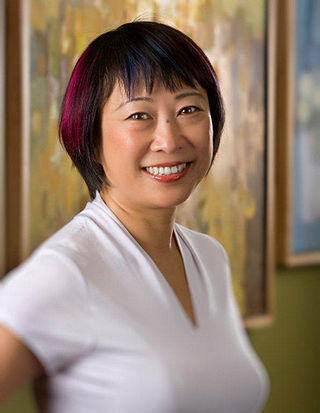
Ping Fu is a Chinese-American entrepreneur. She is the co-founder of 3D software development company Geomagic, and was its chief executive officer until February 2013 when the company was acquired by 3D Systems Inc. As of March 2014, she is the Vice President and Chief Entrepreneur Officer at 3D Systems. Fu grew up in China during the Cultural Revolution and moved to the United States in 1984. She co-founded Geomagic in 1997 with her then-husband Herbert Edelsbrunner, and has been recognized for her achievements with the company through a number of awards, including being named Inc. magazine's 2005 "Entrepreneur of the Year". In 2013, she published her memoir, Bend, Not Break, co-authored with MeiMei Fox.
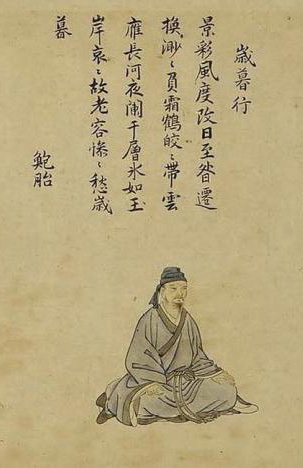
Bao Zhao was a Chinese poet, writer, and official known for his shi poetry, fu rhapsodies, and parallel prose who lived during the Liu Song dynasty (420–479). Bao's best known surviving work is his "Fu on the Ruined City", a long fu rhapsody on the ruined city of Guangling.
Florence Ayscough MacNair was a sinologist, writer and translator of Chinese literature.
Concubine Guo, personal name Guo Ai, courtesy name Shanli (善理), was a concubine of Xuande Emperor.













